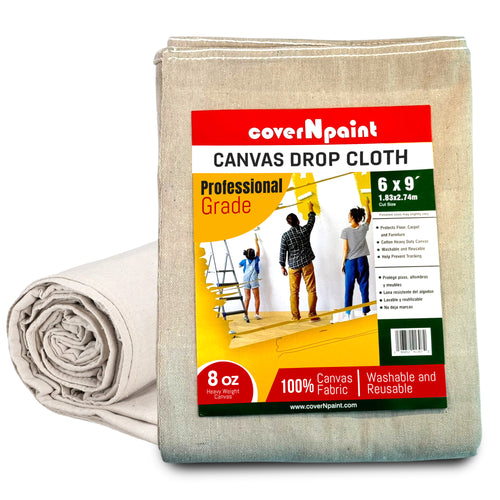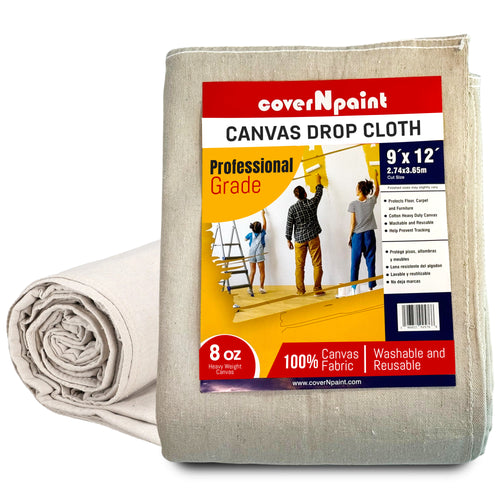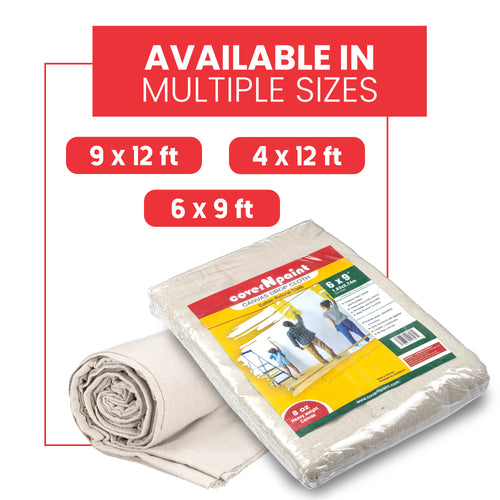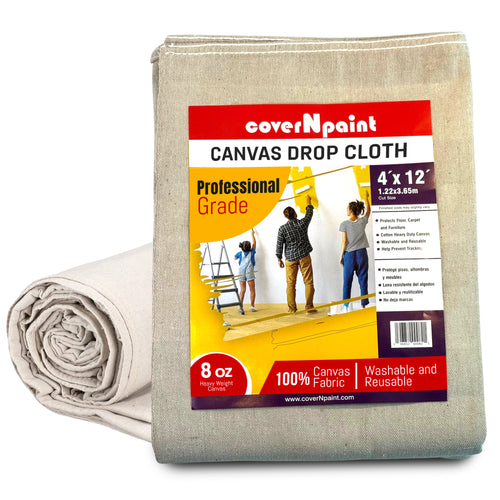When it comes to protecting your home during painting projects, many people assume that all painters drop cloths are completely waterproof. However, this is a common misconception. In reality, the material, weave, and treatment of a canvas drop cloth or paint drop cloth determine its water-resistance capabilities. Understanding the difference between myths and facts can save you from unexpected spills, stains, and cleanup frustration.

Understanding Painters Drop Cloths
Painters drop cloths are essential tools for any painting project. They serve as a protective barrier between your floors, furniture, and walls and the paint you are applying. Drop cloths come in various materials:
-
Canvas Drop Cloths – Durable, heavy-duty, and reusable. Ideal for multi-surface protection.
-
Plastic Drop Cloths – Lightweight and waterproof but prone to slipping and tearing.
-
Paper or Polyethylene Drop Cloths – Disposable and convenient for small projects.
Each type has its own set of advantages and limitations, particularly when it comes to water and paint resistance.
Myth 1: All Painters Drop Cloths Are Waterproof
One of the biggest myths is that every drop cloth is 100% waterproof. The truth is:
-
Canvas Drop Cloths are water-resistant to a degree but not fully waterproof. They can absorb small splashes of water or paint if left on a surface for a long time.
-
Plastic Drop Clothes are generally waterproof but can be slippery and tear easily, making them less safe for high-traffic areas.
-
Heavier Canvas Drop Cloths may be treated with a waterproof coating, but this is not always the case.
Understanding the limitations of each type ensures that you choose the right drop cloth for your project.
Myth 2: Plastic Drop Cloths Are Better Than Canvas
Plastic paint drop cloths might seem convenient, but they have several drawbacks:
-
Slippery Surface – Plastic can cause accidents if placed on smooth floors.
-
Tearing Risk – Thin plastic tears easily, especially on furniture corners or nails.
-
Limited Reusability – Once damaged, plastic cannot be reused.
On the other hand, a canvas drop cloth may be water-resistant, more durable, and safer for long-term use, making it a better investment for serious painters.
How Waterproof Are Canvas Drop Clothes?
Canvas drop cloths are made from tightly woven cotton, making them absorbent yet durable. Here’s what you need to know:
-
Weave Density Matters – A tighter weave increases water resistance.
-
Pre-treatment – Some canvas drop cloths are treated with a waterproof or water-repellent coating.
-
Absorption Control – Canvas can absorb small spills while preventing paint from reaching the floor.
This balance between absorption and water resistance is what makes canvas drop cloths a preferred choice among professionals.
Using Drop Cloths Correctly to Avoid Water Damage
Even if a drop cloth is not fully waterproof, proper usage can prevent damage:
-
Layering – Use multiple layers in high-risk areas.
-
Overlap Furniture – Ensure edges extend beyond the furniture or floor area.
-
Secure with Tape – Prevent slippage by taping corners to the floor.
-
Quick Cleanup – Wipe spills immediately to prevent absorption.
Following these steps ensures your painting project remains clean and protected, even with water-sensitive materials.

Choosing the Right Drop Cloth for Each Room
Every room in your home has different protection needs:
-
Living Rooms – Use a heavy-duty canvas drop cloth under couches, tables, and electronics.
-
Kitchens – Consider water-resistant layers to protect against spills from countertops.
-
Bathrooms – Waterproof plastic drop cloths may be added as an underlayer due to high moisture.
-
High-Traffic Areas – Secure drop cloths to prevent slipping. A combination of canvas and plastic works best.
By selecting the right type of drop cloth, you maximize protection and minimize cleanup.
Maintenance of Drop Cloths
To extend the life of your drop cloth:
-
Canvas – Shake off debris, machine wash if permitted, and store in a dry area.
-
Plastic – Fold carefully, avoid sharp edges, and store in a cool, dry place.
Proper maintenance ensures that your drop cloths continue to provide protection for years.
Curiosity Corner: Why Professionals Choose Carefully
If you’ve ever walked onto a professional paint job, you may notice that experts don’t rely on thin plastic sheets. Instead, they often use heavy-duty canvas drop cloths designed for long-term use, safety, and multi-surface protection. The difference is not just in material—it’s in performance. Exploring the right cloth for your next project with coverNpaint can save you hours of cleanup and protect your home investment.
FAQs
1. Are all painters drop cloths waterproof?
No. Only plastic drop cloths are fully waterproof. Canvas drop cloths are water-resistant but may absorb small spills.
2. Can canvas drop cloths be treated to become waterproof?
Yes, some canvas drop cloths are pre-treated with a water-repellent coating, improving their resistance to liquids.
3. Is it safe to use plastic drop cloths on hardwood floors?
Plastic drop cloths are waterproof but can be slippery, so they must be secured to prevent accidents.
4. How do I prevent paint from soaking through a canvas drop cloth?
Layering, quick cleanup, and using treated canvas drop cloths are effective ways to minimize paint penetration.
5. Which drop cloth is best for professional painters?
Heavy-duty canvas drop cloths are preferred due to durability, multi-surface protection, and safer handling compared to thin plastic sheets.












